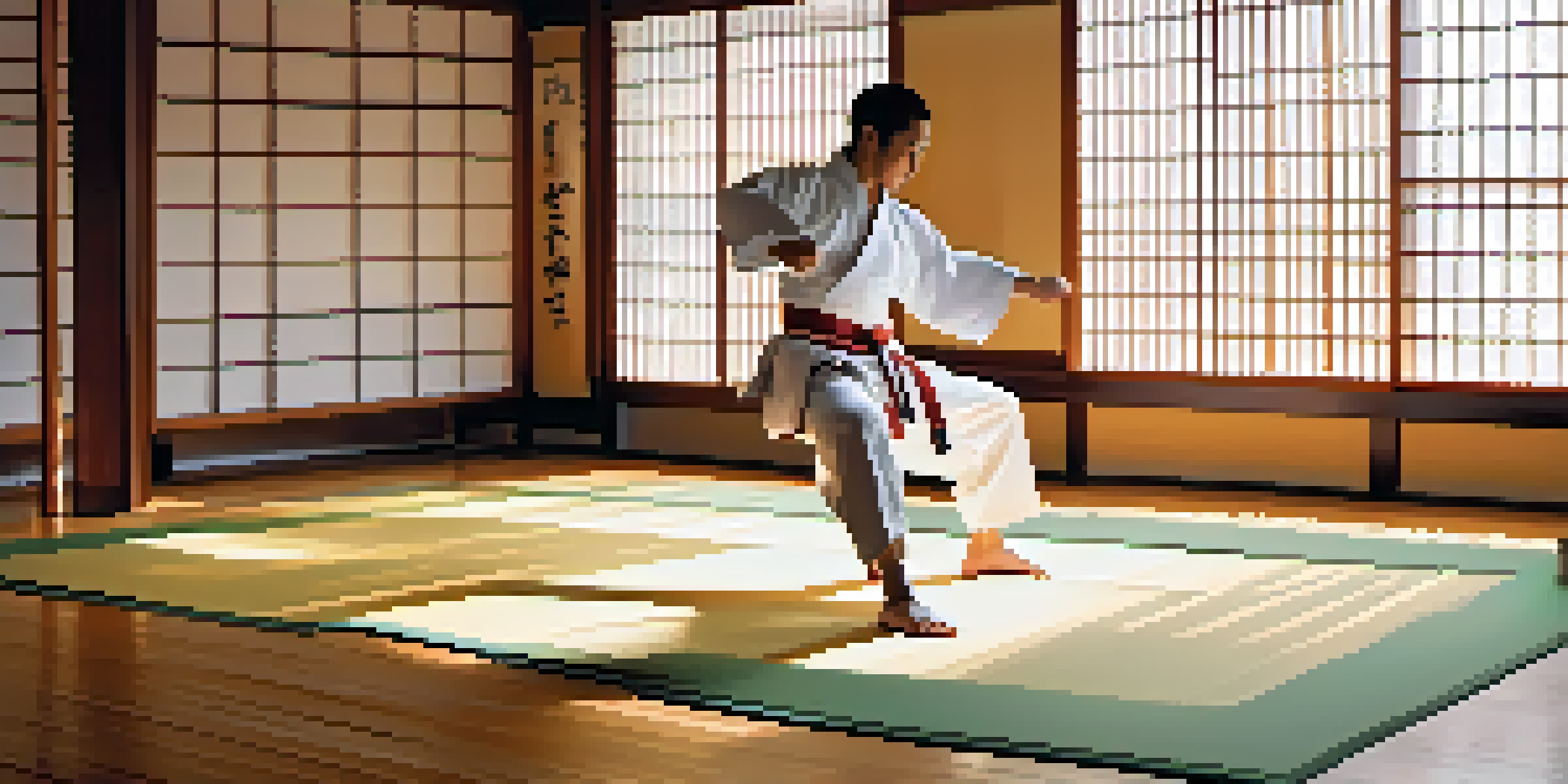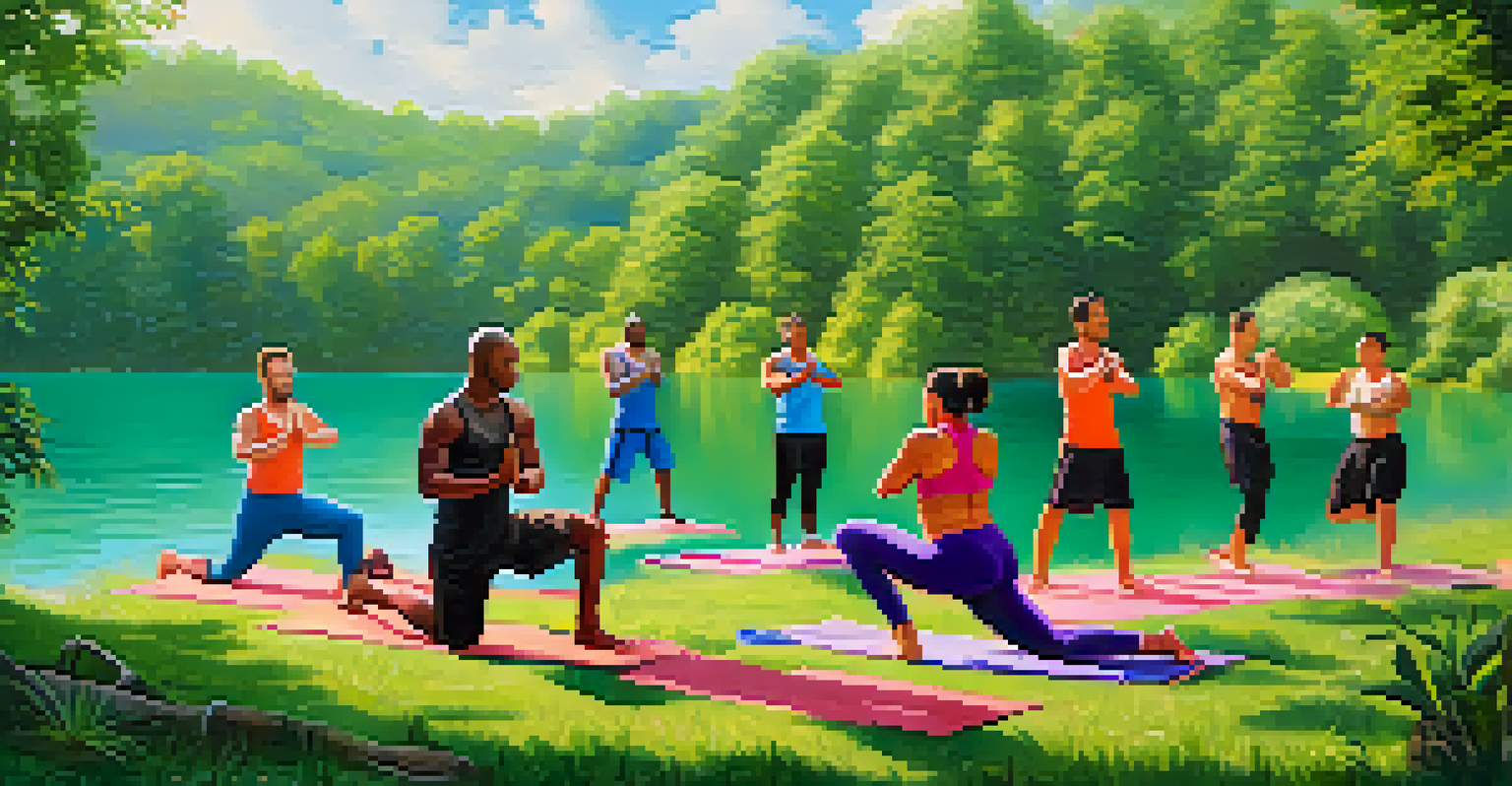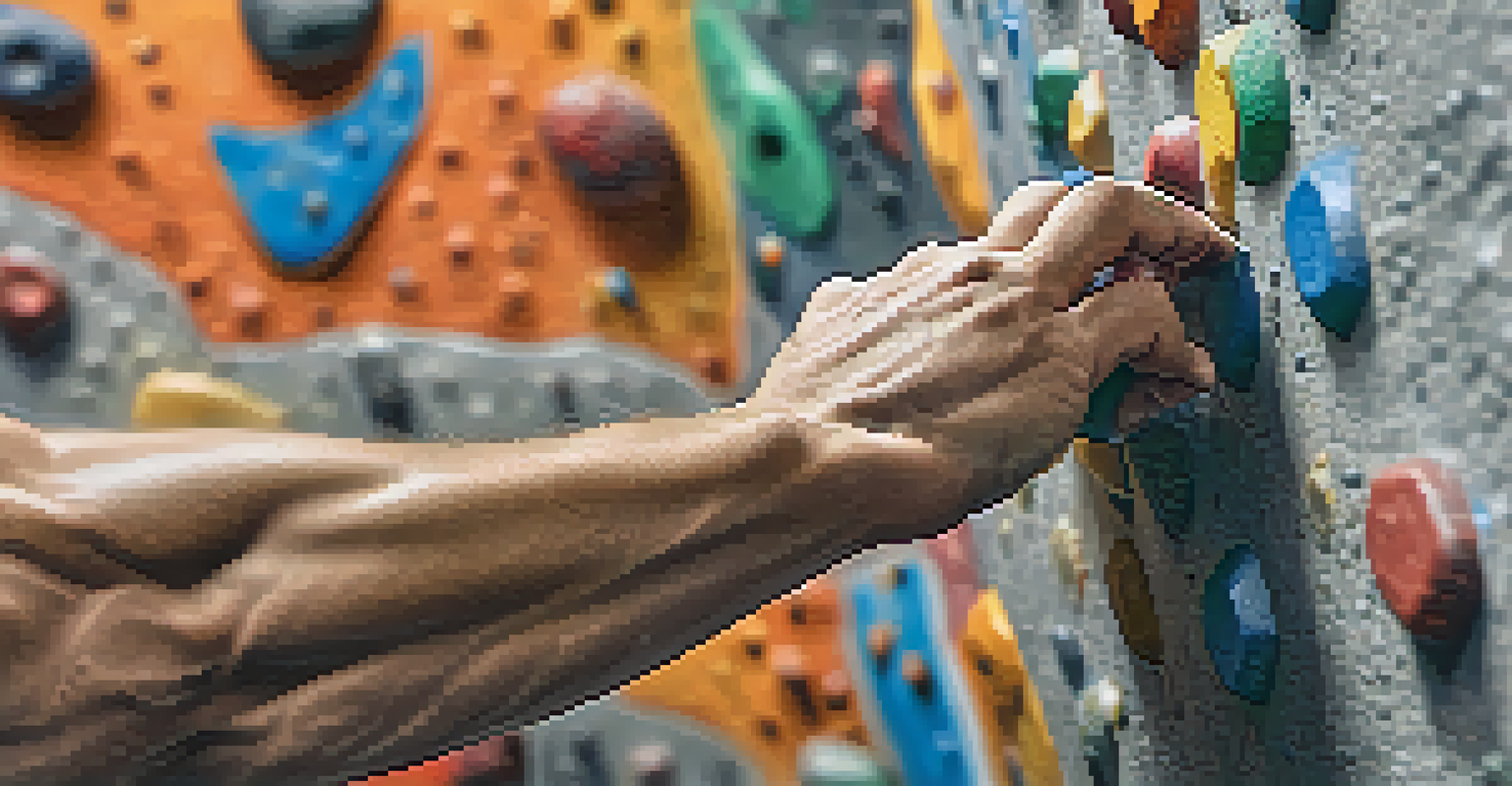Cross-Training: Benefits for Martial Arts Practitioners

Understanding Cross-Training in Martial Arts
Cross-training involves practicing different physical activities to improve overall performance. For martial arts practitioners, this can mean integrating disciplines like yoga, weightlifting, or swimming into their routines. The goal is to enhance strength, flexibility, and endurance, which are crucial for any martial artist.
Cross-training is not just about physical training; it is about creating a well-rounded athlete.
Imagine a judo practitioner who also does yoga; the flexibility gained from yoga can significantly improve their grappling techniques. By diversifying training, martial artists can avoid plateaus and keep their skills sharp. This approach not only builds physical capabilities but also keeps the training experience fresh and exciting.
Ultimately, cross-training supports the idea that becoming a well-rounded athlete can lead to greater mastery in martial arts. It allows practitioners to tap into different strengths and techniques, fostering a more adaptable and resilient fighter.
Enhanced Physical Fitness Through Cross-Training
One of the most significant benefits of cross-training is improved overall fitness. Regular martial arts practice can sometimes lead to muscular imbalances, but incorporating other workouts can help address this issue. For example, adding strength training can bolster the muscles that support various martial arts techniques.

Think of cross-training as a balanced diet for your body; just as you wouldn't eat only one type of food, your body benefits from a variety of exercises. This approach not only enhances stamina and strength but also reduces the risk of injury. A well-conditioned body is less likely to suffer strains or sprains during intense training sessions.
Cross-Training Enhances Performance
Incorporating diverse workouts boosts strength, flexibility, and endurance, making martial artists more adaptable.
Moreover, a fitter body translates to better performance in martial arts. Increased cardiovascular health means more energy during fights, while enhanced strength can lead to more powerful strikes and effective grappling.
Improved Mental Toughness and Focus
Cross-training can also boost mental toughness, a vital aspect of martial arts. Engaging in different activities challenges your mind in new ways, enhancing focus and discipline. When you learn to push through the discomfort of a new workout, you build resilience that translates back to your primary martial art.
Variety is the spice of life, and it can also be the key to athletic success.
For instance, a kickboxer who takes up rock climbing might find that overcoming the physical and mental challenges of climbing makes them more determined in the ring. This mental conditioning can be just as important as physical training. It helps martial artists face opponents with confidence and clarity.
In essence, cross-training becomes a mental workout, sharpening focus and enhancing the ability to stay calm under pressure. Such skills are invaluable during competitions or sparring sessions, where mental clarity can make all the difference.
Injury Prevention and Recovery Benefits
Cross-training plays a crucial role in injury prevention for martial artists. Many injuries stem from repetitive movements within a single discipline, leading to overuse injuries. By diversifying workouts, practitioners strengthen different muscle groups and reduce the likelihood of strain.
For example, a taekwondo practitioner who incorporates swimming might find that the low-impact nature of swimming aids recovery after intense training sessions. This variety allows the body to heal while still maintaining fitness levels. Additionally, cross-training encourages active recovery, which is essential for long-term martial arts success.
Injury Prevention Through Variety
Cross-training reduces the risk of overuse injuries by strengthening different muscle groups and promoting active recovery.
Ultimately, a strategic cross-training regimen can prolong a martial artist's career. By keeping the body balanced and resilient, they can continue to practice and compete without the nagging injuries that often sideline athletes.
Skill Transfer Between Disciplines
One of the fascinating aspects of cross-training is the skill transfer that occurs between different disciplines. Techniques learned in one sport can often improve performance in another. For instance, balance and footwork drills from ballet can greatly enhance a martial artist's agility and movement.
Consider a mixed martial artist who practices Brazilian jiu-jitsu while also training in boxing. The striking skills acquired from boxing can improve their stand-up game, while grappling techniques from jiu-jitsu can enhance their overall strategy. This transfer of skills creates a more versatile fighter capable of adapting to various situations.
Thus, cross-training not only broadens a practitioner's skill set but also fosters creativity in their martial arts practice. It encourages martial artists to think outside the box and develop unique strategies that can set them apart in competitions.
Building a Supportive Training Community
Engaging in cross-training often leads to meeting new people and building a supportive training community. Joining classes in different disciplines allows martial artists to connect with others who share similar interests. This camaraderie can boost motivation and accountability.
Imagine the bonds formed between practitioners at a local yoga class who later cheer each other on during competitions. These relationships provide emotional support and encouragement, which can be incredibly beneficial during challenging training periods. A strong community can inspire individuals to push their limits and stay committed to their goals.
Building Community and Support
Engaging in cross-training fosters connections with others, creating a supportive environment that enhances motivation and accountability.
In essence, cross-training cultivates a sense of belonging and shared experience among practitioners. This supportive environment can enhance overall performance and enjoyment of martial arts, making the journey more fulfilling.
Creating a Balanced Training Program
To reap the benefits of cross-training, it's essential to create a balanced training program. This means incorporating various activities that complement your primary martial art without overwhelming your schedule. A well-structured plan ensures that all aspects of fitness are addressed.
For instance, a martial artist might choose to train in their primary discipline three days a week, with two days dedicated to strength training and one day for flexibility work. This approach allows for adequate recovery time while still pushing the body to adapt and grow. The key is to listen to your body and adjust as necessary.

Ultimately, a balanced training program fosters continuous improvement. By strategically integrating cross-training, practitioners can enhance their martial arts skills while maintaining overall physical fitness and mental well-being.